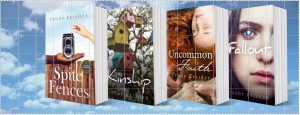TAKING THE MYSTERY
OUT OF
WRITING HISTORY
Step 2 Revisited
Welcome back, historical fiction fans and writers!
We stressed in Step 1 to think of your history first as a story. Hi-STORY, remember?
In Step 2, we focused on the literary techniques that make every piece of fiction – historical or otherwise – memorable. These techniques are : heroes and villains, plot twists, surprise beginnings and endings, captivating minor characters, and overarching themes and ideas.
Step 2 Revisited will explore each of these elements in more detail. Here goes!
HEROES AND VILLAINS
Can there be any more memorable hero of World War II than Winston – “We will never surrender!” – Churchill? Can there be any more treacherous villain than Adolf – “The devil…assumes the living shape of the Jew”- Hitler?
Can you think of more examples of heroes and villains in history? Who are the heroes and villains in your own story?
PLOT TWISTS
Here’s an example of a compelling plot twist:
A promising Harvard student volunteered for a psychology experiment that left him perplexed, confused and tormented about this own beliefs.
After he graduated, he was still so broken down that he retreated to the woods. There he completed a manifesto that explored his torment. Sadly, he acted out his tormented ideas, becoming a domestic terrorist: Theodore John Kaczynski, “The Unabomber.”
Can you think of more examples of plot twists in history and in your own story?
SURPRISE BEGINNINGS AND ENDINGS
Surprise Beginnings: Although Europe was a simmering powder keg, no one expected World War I to start in this way. But on June 28th, 1914, Gavrilo Princip assassinated Archduke Franz Ferdinand in Sarajevo, and the tragedy called World War I began.
Surprise endings: The most tightly held military secret of World War II was the United States’ development of the atomic bomb. When it was launched on Hiroshima on August 6, 1945, World War II came to a surprising and unexpected end.
Can you provide some other examples of history’s surprising beginnings and endings? What are the surprising beginnings and endings in your own work?
CAPTIVATING MINOR CHARACTERS
Yoda, we all know, was a minor character in Star Wars, but he was highly significant. Holden Caufield’s little sister Pheobe is mentioned only a few times in Catcher in the Rye, but she is mature and wise, serving as a foil to Holden’s unsettled confusion. The climax of the plot in To Kill a Mockingbird is largely driven by the hidden and mysterious Boo Radley; he is a minor character who emerges as a hero at the end of the novel. The police inspector Javert appears throughout Les Miserables as the embodiment of a corrupt system of justice. Thus, minor characters can have a major influence on a work of historical fiction.
Can you think of other examples of captivating minor characters who strongly influence works of historical fiction? Who are the captivating minor characters in your own work?
OVERARCHING IDEAS/THEMES
Historical periods are often described by their overarching themes or ideas. For example, the 20th century’s Cold War was a period characterized by suspicion, fear, and competing ideologies. The 18th century’s Enlightenment is another example of an historical period with unique themes and ideas. The Enlightenment emphasized reason, individualism, and skepticism as well as resistance to traditional ideas of religion.
It will help your historical novel immensely if you can draw on the overarching themes and ideas of the period as you create your own overarching themes and ideas for your own story.
For example, in my novel Fallout, set in 1954 in the middle of the Cold War, I used the metaphor of the hurricane to help drive the narrative. Thus, the suspicion, fear, and competing ideologies of the time are underscored by the swirling, damaging, uncontrollable chaos of the hurricane.
My other novels draw on the overarching ideas and themes of time periods as well. Spite Fences addresses the Civil Rights movement of the 1960s; Kinship explores themes about the growth of suburbia and the burgeoning consumer-rich society after World War II. Uncommon Faith is set against the backdrop of 19th century progressive movements on behalf of African-Americans and women.
Can you think of any other overarching ideas or themes in other historical periods? What are the overarching ideas or themes you are drawing on in your own work?
I hope you found this post helpful. If so, please contact me and let me know about your own work. I’m eager to listen.
Until then, Happy Writing!

